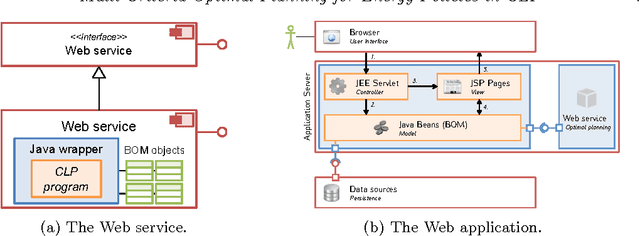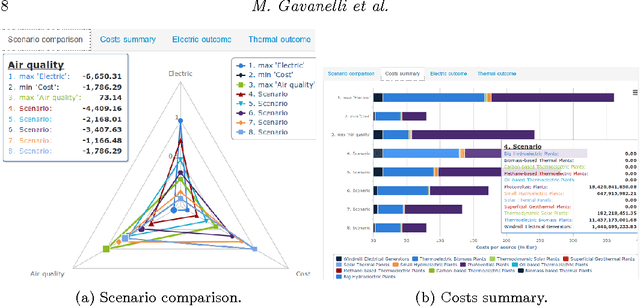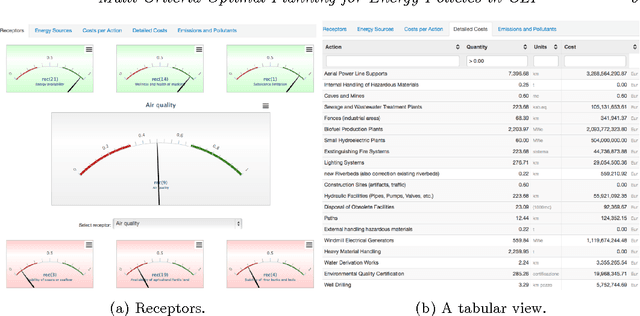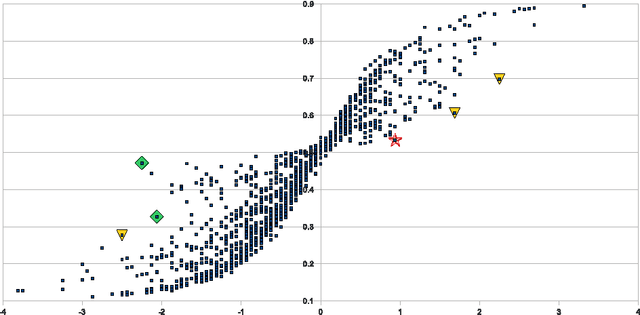Paolo Cagnoli
Multi-Criteria Optimal Planning for Energy Policies in CLP
May 15, 2014


Abstract:In the policy making process a number of disparate and diverse issues such as economic development, environmental aspects, as well as the social acceptance of the policy, need to be considered. A single person might not have all the required expertises, and decision support systems featuring optimization components can help to assess policies. Leveraging on previous work on Strategic Environmental Assessment, we developed a fully-fledged system that is able to provide optimal plans with respect to a given objective, to perform multi-objective optimization and provide sets of Pareto optimal plans, and to visually compare them. Each plan is environmentally assessed and its footprint is evaluated. The heart of the system is an application developed in a popular Constraint Logic Programming system on the Reals sort. It has been equipped with a web service module that can be queried through standard interfaces, and an intuitive graphic user interface.
Logic-Based Decision Support for Strategic Environmental Assessment
Jul 19, 2010
Abstract:Strategic Environmental Assessment is a procedure aimed at introducing systematic assessment of the environmental effects of plans and programs. This procedure is based on the so-called coaxial matrices that define dependencies between plan activities (infrastructures, plants, resource extractions, buildings, etc.) and positive and negative environmental impacts, and dependencies between these impacts and environmental receptors. Up to now, this procedure is manually implemented by environmental experts for checking the environmental effects of a given plan or program, but it is never applied during the plan/program construction. A decision support system, based on a clear logic semantics, would be an invaluable tool not only in assessing a single, already defined plan, but also during the planning process in order to produce an optimized, environmentally assessed plan and to study possible alternative scenarios. We propose two logic-based approaches to the problem, one based on Constraint Logic Programming and one on Probabilistic Logic Programming that could be, in the future, conveniently merged to exploit the advantages of both. We test the proposed approaches on a real energy plan and we discuss their limitations and advantages.
* 17 pages, 1 figure, 26th Int'l. Conference on Logic Programming (ICLP'10)
 Add to Chrome
Add to Chrome Add to Firefox
Add to Firefox Add to Edge
Add to Edge